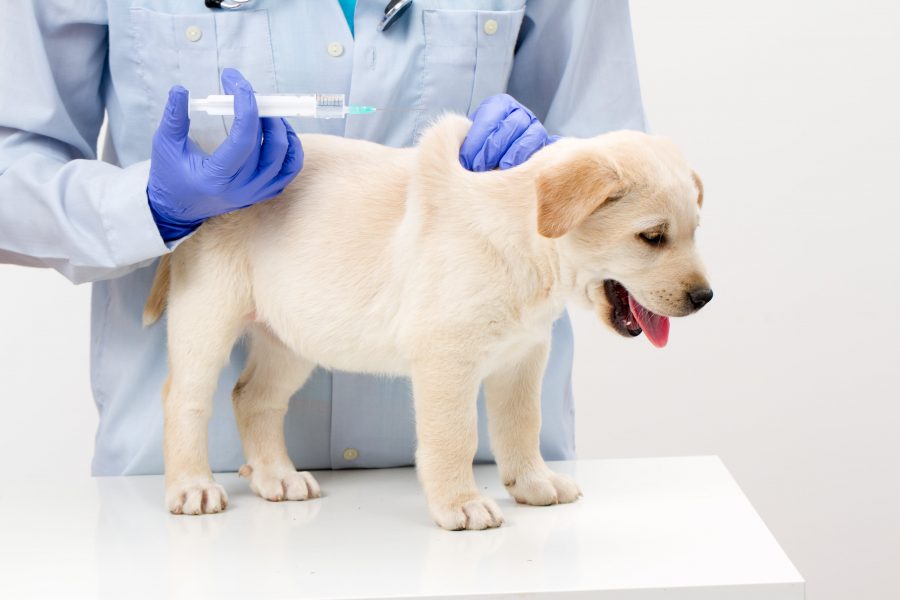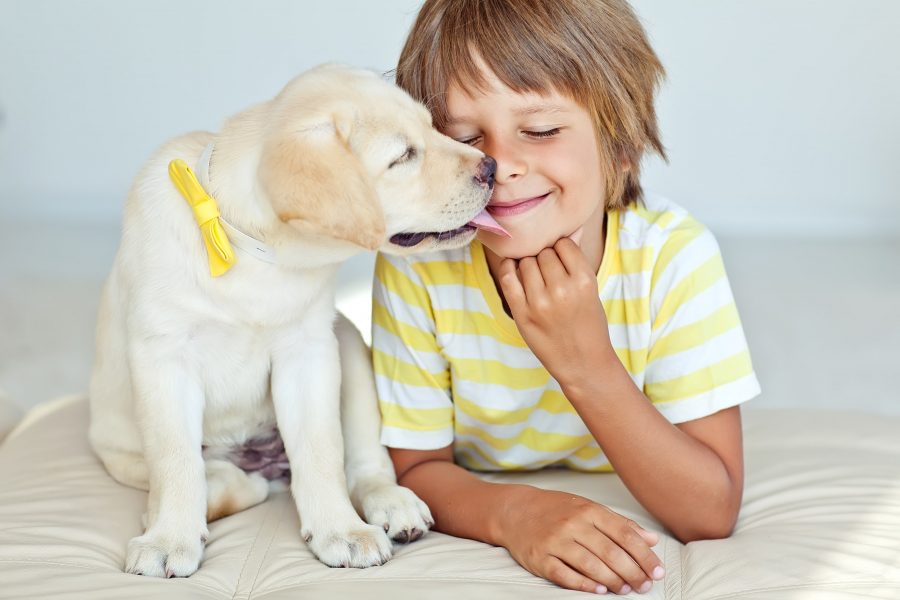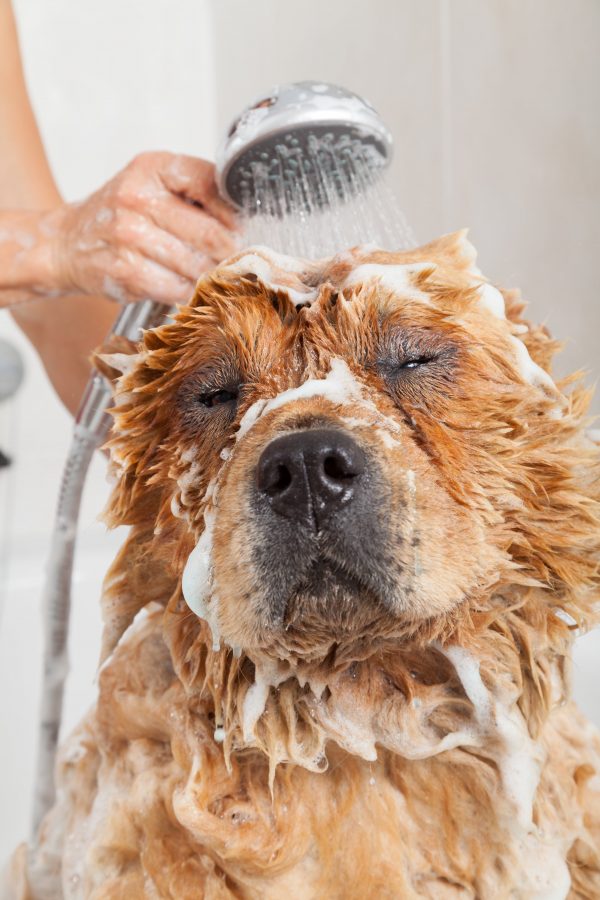According to the latest research from Censis (an Italian Research Institute), Italians love animals.
Preceded only by Hungary, Italy is the second European country for the number of pets. Italians have welcomed in their homes 32 million pets, 7 million of which are dogs.
However, living with a dog is not always the easiest thing. As if the organizational and space issues were not enough, some people may have or develop annoying allergic reactions to dogs.
If compared to cat hair allergies, dog hair allergies are less common. However, they are spread enough to affect many dog owners.
People who suffer from these kind of allergies are hypersensitive to a range of substances which can be found in dog fur and which may cause several, more or less, severe symptoms.
For this reason, it is important to treat the hair allergy correctly, so that you and your dog can live together happily ever after.

There is no need for you to give up your dream of having a puppy or to part with your current pet! New and relevant medical research has shown that you can still live in the same house with your dog, even if you suffer from dog allergies.
Dog Allergies: Symptoms and Causes
Dog hair allergies are generally triggered by IgE (Immunoglobulin E), a specific type of antibody.
When it comes in contact with some secretions such as saliva and dandruff, IgE triggers a reaction in the human immune system. As a consequence an inflammatory reaction arises, which ends up affecting mainly the respiratory tract.
Sometimes, however, it is the mites on the dog hair that trigger the allergy. That is why clothes are one of the most common means of transmitting allergens, since dog hair attaches to them very easily.
There are currently six recognised allergens: Can f 1, f 2, f 3, f 4, f 5, f 6. Recently it has been discovered that Can f 5 is secreted only by male dogs.
In fact, some of the most common allergens are produced exclusively by male dogs – that is why some people suffering from dog allergies do not show allergic reactions in the presence of female dogs.
Therefore, it is advisable to opt for the sterilization of male dogs, since this would reduce the presence of the allergic component.
It is important to know how dog allergies work. Symptoms vary depending on the circumstances.
In most cases, the most common symptoms are rhinitis and asthma, but skin reactions such as dermatitis and eye disorder (i.e. conjunctivitis) may also occur.
If you have even one of these symptoms, you should contact your doctor as soon as possible: he will be able to advise you on how best to deal with them.
In case you are hypersensitive to dog hair, these are the most common allergic reactions that may occur:
- Asthma and rhinitis;
- Eye disorders (conjunctivitis, swelling, redness);
- Nose and throat itching;
- Feeling of pressure and pain on the face;
- Coughing and sneezing;
- Stuffy nose and difficulty breathing;
- Skin issues such as hives or dermatitis.
Another important question is how long after the allergic reaction becomes apparent. It varies from case to case.

In some people the allergy emerges immediately, while others may show symptoms after they have happily lived with their dog for years.
This kind of allergies can occur at any time of the year, in random places such as at the workplace or at school.
There is no need to even have a dog around! Allergens can be easily transported through the hairs on the clothes, thus facilitating their spread.
Most Common Allergic Agents
Dog hair allergies are, without a doubt, a serious issue, but it is possible to deal with their symptoms.
There is no need for you to give up your wish of having a puppy or to separate from your pet if you already have one.
By taking targeted precautions and resorting to specific remedies, it is possible to comfortably live with your furry friend.
As already mentioned, allergies are triggered by our immune system which reacts against some allergenic proteins present mainly in the secretions of our pet such as saliva and dandruff.
Dog saliva contains two main allergens: Canis familiaris 1 and Canis familiaris 2.
These two proteins are spread by dogs when they clean their fur and their legs (that is why people believe allergies are caused by dog hair, not by their saliva).
Be very careful, because these allergens may affect your respiratory system even if you have not been in direct contact with dog hair. If your allergy is severe, you should avoid holding your puppy as well as remember to always wash your hands after petting him.
Allergies to dandruff may be prevented by getting rid of it with specific detergents and dandruff lotions for dogs. This will kill the microorganisms that feed on it.
To make sure that your dog has perfect hygiene, brush him daily, take him outdoors as often as possible and wash him every two weeks with a specific shampoo to remove the dandruff that inevitably deposits on his fur.
Remedies to Dog Allergies
Complete recovery from dog hair allergy is very rare. However do not get discouraged! Although you cannot permanently get rid of your allergy, you can still adopt a puppy.
It is enough for you to keep your symptoms under control and you may happily live with your four-legged friend.
First of all, you should ask your doctor for a drug treatment that will scale down your allergic reactions.
Such drugs as antihistamines, corticosteroids, decongestants as well as immunological therapies for dog hair allergies will make you feel immediately better.
Do-it-yourself remedies must be absolutely avoided, as they may only worsen your condition.
Instead, it is essential to consult a doctor and carry out specific allergy tests: only in this way will it be possible to determine the precise nature of the allergen and then proceed with the most suitable therapy.
The allergy symptoms may appear suddenly and it is often not easy to associate them with certainty to a specific element. So if you suspect being allergic to dog hair, the best thing to do is to run some allergy tests. The most recommended tests are:
- Prick test: being a diagnostic test, it is run to identify the causes of respiratory or food allergies. It is best suited to find or exclude certain allergens. This test is very simple and is performed by pricking the skin with a prick test needle and then applying a drop of the allergen on the skin. If the result is positive, within a few minutes a swelling similar to a mosquito bite will appear on the skin;
- Rast test (Radioallergosorbent test): it is a second-level diagnostic allergy test. It is based on the premise that allergic patients have specific antibodies in their blood that fight against the allergens. With this test your doctor will be able to identify whether your immune system produces a high or low amount of IgE, antibodies which are present in large quantities in people with allergies.
As far as other non-medical remedies are concerned, you may opt for some very effective preventive measures.
First of all, you must brush your dog every day and wash him thoroughly twice a month. By doing so you will remove all the excess hair which harbor mites and allergens.

Always keep a sticky roller brush at hand. It will help you remove the dog hair stuck to your garments and to all those objects made of fabrics and materials that attract the hair (i.e. carpets, velvet sofas and stuffed animals).
Another useful thing you can do is to keep your home always very clean, by vacuuming daily and by using antibacterial detergents in order to eliminate any allergen.
A final advice for when your furry friend gets in the car: always cover the seats with an easily-washable cloth or a cotton sheet so that you may clean it and disinfect it frequently.
Hypoallergenic breeds
In addition to all these effective remedies, there are some dog breeds that develop fewer allergens. The so-called “dogs for allergic people” generally have very short or curly hair. The best known hypoallergenic breeds are:
- Airedale Terrier: medium-large in size, these dogs have a short, hard coat that, if brushed regularly enough, harbors a limited amount of allergens;
- Poodle: this breed is characterized by curly and very soft hair that regenerates continuously and without moulting. It is not subject to hair loss, so there is no risk of hair spreading in the air;
- Maltese: these dogs are small in size and have long silky hair. Despite this, they are considered hypoallergenic because they do not lose their hair;
- Yorkshire Terrier: it is one of the most beloved breed because of its cheerful and affectionate nature. It has long hair, but no undercoat, so the amount of allergens that spreads in the air is greatly reduced.
So, if you really want to share your life with “man’s best friend”, don’t let allergies get in your way! By following some easy tips, you may easily get a dog and have a comfortable life together.
